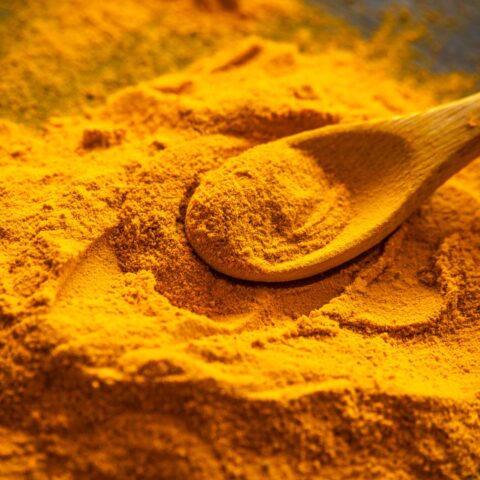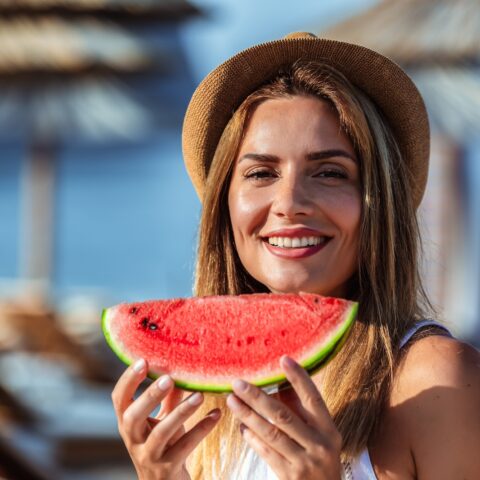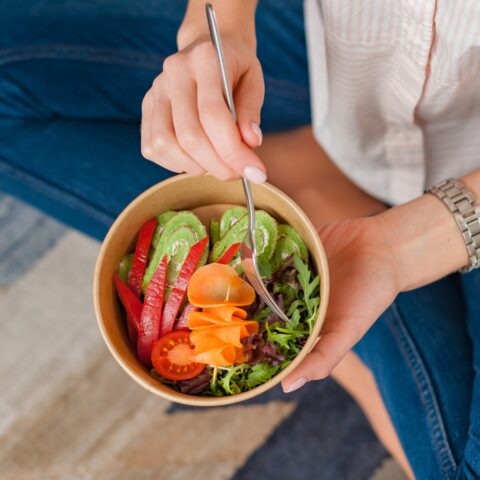The Sodium to Potassium Ratio Is One Reason Cheese is Not Paleo
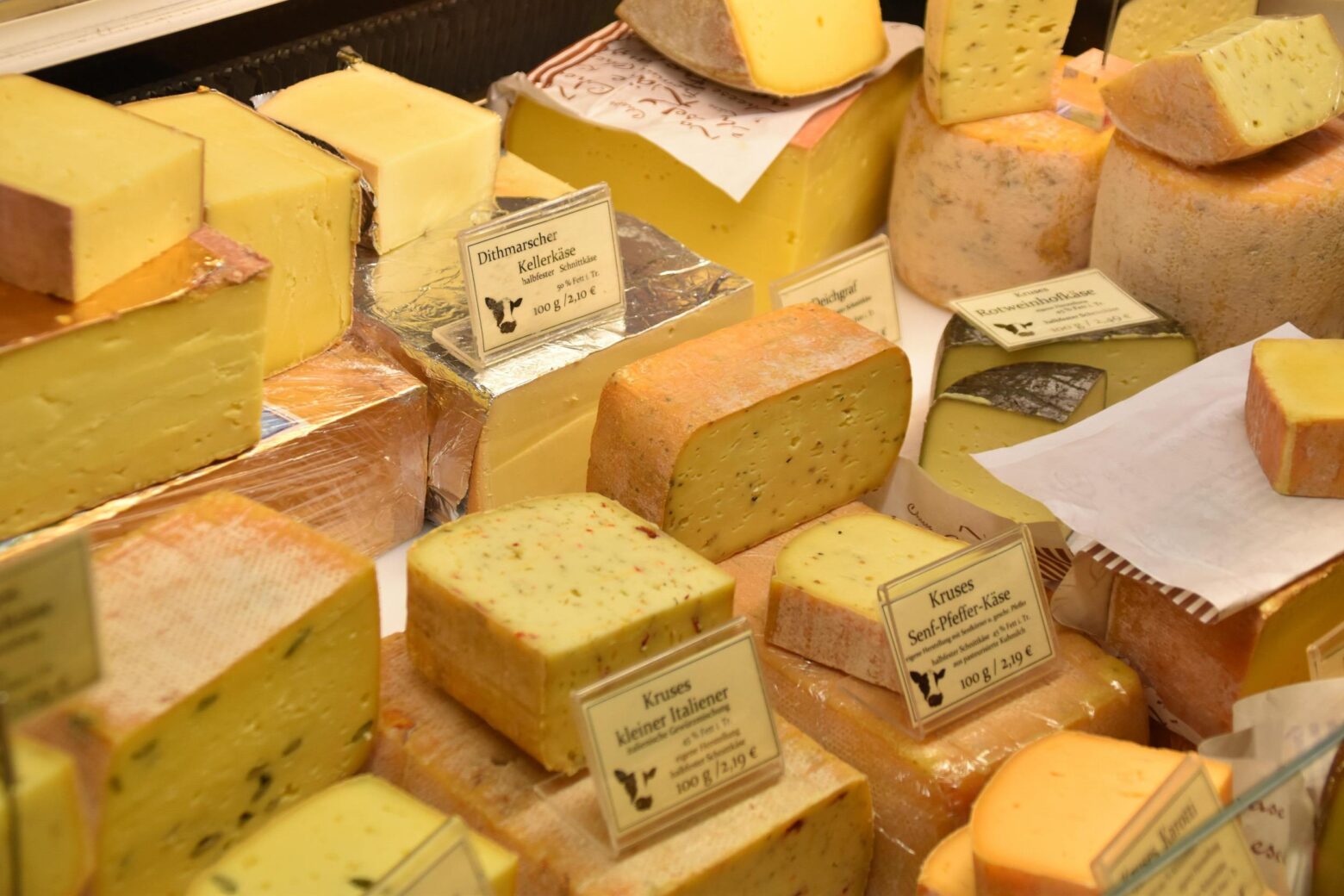
As more and more people get into The Paleo Diet, a frequent question comes up – how do I know which foods are permitted and those which are not part of contemporary Paleo Diets? The Paleo Diet movement has become so large and fractionated in recent years that many versions of “Paleo” have now arisen. An interesting, but flawed adaptation of present day Paleo Diets frequently permit regular/daily consumption of dairy products (including cheese).
So how can you easily determine if any common modern day food mimics the nutritional characteristics of those foods our Stone Age ancestors would have consumed, and whether or not you should include or delete these contemporary foods from your menu? A near universal nutritional characteristic of junk and processed foods is that they contain added, mined salt (NaCl), a compound that was rarely or never present in Stone Age or preagricultural diets. [1-9]
Added Salt
Check out the labels on your foods – virtually every and all packaged and processed foods contain added salt. In fact, the typical U.S. diets contain 9.1 grams of salt per day. [10] Our ancestral dietary intakes of salt were about 1/6th (1.5 grams) to 1/10th (0.91 grams) this level (1-8, 11) and sometimes lower still. [12] Governmental agencies require manufacturers of canned, processed or packaged foods to reveal the sodium content of their food products, but this information doesn’t necessarily tell us the entire story.
Sodium in food almost always comes from added salt, a compound containing not just sodium (Na+), but also chloride (Cl). If you want to find out how much salt has been added to a canned, packaged or processed food, multiply the sodium content by 2.54 (the molecular weight of Cl is 35.45 and that of Na+ is 22.98 and the ratio of Cl to Na+ is 2.54), this calculation will give you the total salt (NaCl) content in the food. It’s not just the sodium content of a food which is harmful to our bodies, but also the chloride content [13-16], and since nearly all excess sodium in our diet comes from salt added to food [1, 8] anytime you have a high sodium intake, you also will have a high chloride intake.
The importance of the sodium to potassium ratio
One nearly universal characteristic of fresh, natural, unsalted foods is that they contain high concentrations of potassium (K+) and low concentrations of sodium (Na+). [1, 7, 8, 11, 17] Our research group has recently completed an extensive compilation of the K+ and Na+ concentrations found in more than 1200 wild and domesticated unsalted foods from all food groups. [18] From our results, you can easily see that consuming only natural, unsalted foods, it is implausible or impossible to eat > 2,400 mg Na+/day for adult men and women. Further, consumption of natural, unsalted foods show that it is virtually impossible to eat a K+/Na+ ratio of less than 5.0. Unfortunately, in the typical U.S. diet, we eat more Na+ (3,584 mg/day) than K+ (2795 mg/day) (10) yielding a daily K+/Na+ ratio of 0.77 which is 6.5 lower than the K+/Na+ ratio (5.00) that is normally obtained by only eating natural, unsalted foods (18).
The scientific literature (based upon randomized controlled human trials [RCT] and epidemiological evidence) is nearly in universal agreement of their condemnation of high salt/low potassium diets. [8, 10, 17, 19-26] How is it that the Paleo community has missed this fundamental nutritional concept and still promotes cooking and recipes using sea salt or refined salt?
Cheese
One of the original “processed foods” which first appeared during the Neolithic (5,400 to 4,800 years ago) was cheese. [27] Cheese is not a “natural” food, but rather represents a complex, manufactured, processed food requiring multiple steps for its synthesis and production. [27, 28] These steps and procedures simply would have been beyond the technological capabilities of hunter-gatherer societies.
Some contemporary Paleo Dieters regularly include cheese in their nutritional repertoires because they believe that cheese is a wholesome and natural food with nutritional characteristics similar to foods our pre-agricultural ancestors consumed. Nothing could be further from the truth. I only examine a single nutritional characteristic of modern day cheeses – their high salt content – and show you why you should avoid them.
Below is a list of the 14 bestselling cheeses in the U.S. and their respective share of the total U.S. cheese market along with their added salt content.
| Cheese | Market Share (%) | Added Salt mg/100g cheese(28-30) |
| 1. Mozerella | 21% | 1692 |
| 2. Cheddar | 15% | 1562 |
| 3. Parmesan | 14% | 4069 |
| 4. Monterey Jack | 9% | 1361 |
| 5. Swiss | 8% | 488 |
| 6. American (processed) | 7% | 3155 |
| 7. Blue | 7% | 3543 |
| 8. Provolone | 5% | 2225 |
| 9. Ricotta (part skim) | 3% | 318 |
| 10. Feta | 3% | 2835 |
| 11. Cream Cheese | 2% | 815 |
| 12. Goat (Semisoft) | 2% | 1308 |
| 13. Nacho (processed) | 1% | 2540 |
| 14. Asiago | 1% | 2540 |
| 15. Other | 2% |
Of all the cheese eating countries in the world, Greece ranks first with a per capita consumption of 68.5 pounds per year, followed by France with an annual per capita consumption of 57.5 pounds. The U.S. ranks 15th world wide with a yearly per capita consumption of 32.6 pounds or 1.43 ounces (41 grams) per day. From the graph below, you can see that over the past 43 years U.S. cheese consumption has increased more than any other dairy product.
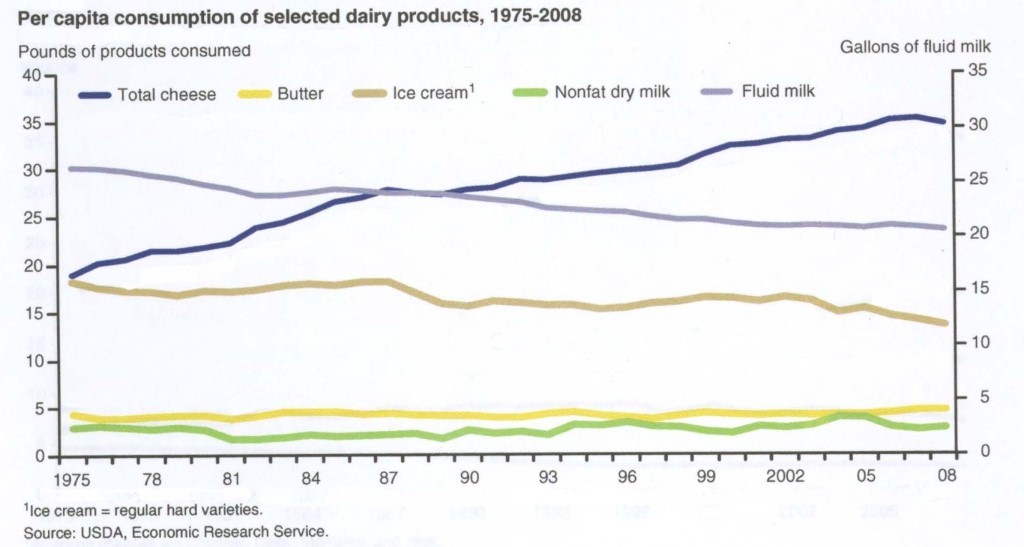
The table below alphabetically lists the salt content of 26 other cheeses commonly consumed worldwide.
| Cheese | Added Salt mg/100g cheese (28-30) |
| Brick | 1422 |
| Brie | 1598 |
| Camembert | 2139 |
| Cheshire | 1778 |
| Colby | 1534 |
| Cottage 2% fat | 838 |
| Edam | 2451 |
| Fontina | 2032 |
| Gorgonzola | 3447 |
| Gouda | 2080 |
| Gruyere | 853 |
| Havarti | 1524 |
| Jarlsberg Swiss | 1163 |
| Kasseri | 2540 |
| Limburger | 2032 |
| Muenster | 1595 |
| Neufchatel | 848 |
| Port du Salut | 1356 |
| Queso Anejo | 2873 |
| Queso Asadero | 1664 |
| Queso Banco | 3810 |
| Queso Chihuahua | 1567 |
| Queso Fresco | 335 |
| Romano | 3048 |
| Roquefort | 4595 |
| Tilsit | 1913 |
Finally, the table below ranks the Na+ content for 40 cheeses from highest to lowest, their potassium (K+) concentrations and their K+ to Na+ ratios, and then contrasts these values to fresh, unsalted milk.
| Cheese Type | Na+(mg)/
1000 kcal | K+ (mg)/
1000 kcal | K+/Na+ ratio/mg per mg |
| Roquefort Cheese | 4902 | 247 | 0.05 |
| Feta Cheese | 4227 | 235 | 0.06 |
| Blue Cheese | 3952 | 725 | 0.18 |
| Cottage Cheese | 3837 | 977 | 0.25 |
| Parmesan Cheese | 3548 | 290 | 0.08 |
| Romano Cheese | 3101 | 222 | 0.07 |
| Mexican cheese (Questo Anejo) | 3032 | 233 | 0.08 |
| Camembert Cheese | 2807 | 623 | 0.22 |
| Edam Cheese | 2703 | 527 | 0.19 |
| Provolone Cheese | 2496 | 393 | 0.16 |
| Limburger Cheese | 2446 | 391 | 0.16 |
| Mozzarella Cheese | 2437 | 331 | 0.14 |
| Gouda Cheese | 2301 | 340 | 0.15 |
| Tilsit Cheese | 2216 | 191 | 0.09 |
| Fontina Cheese | 2057 | 165 | 0.08 |
| Brie Cheese | 1883 | 455 | 0.24 |
| Caraway Cheese | 1862 | 250 | 0.13 |
| Mexican cheese (Questo Asadero) | 1840 | 242 | 0.13 |
| Cheshire Cheese | 1809 | 246 | 0.14 |
| Muenster Cheese | 1708 | 364 | 0.21 |
| Mexican cheese (Questo Chihuahua) | 1650 | 139 | 0.08 |
| Calzone Cheese | 1543 | 343 | 0.22 |
| Cheddar Cheese | 1541 | 243 | 0.16 |
| Colby Cheese | 1533 | 322 | 0.21 |
| Port du Salut Cheese | 1517 | 386 | 0.25 |
| Monterey Jack Cheese | 1437 | 217 | 0.15 |
| Neufchatel Cheese | 1320 | 601 | 0.46 |
| Cream Cheese | 939 | 404 | 0.43 |
| Ricotta Cheese | 906 | 906 | 1.00 |
| Gruyere Cheese | 814 | 196 | 0.24 |
| Goat Cheese (hard) | 765 | 106 | 0.14 |
| Swiss Cheese | 505 | 203 | 0.40 |
| Emmentaler Cheese | 505 | 203 | 0.40 |
| Mean = | 2125 | 355 | 0.21 |
| Milk | Na+ (mg)/ 1000 kcal | K+ (mg)/ 1000 kcal | K+/Na+ Ratio |
| Milk, cows 3.3 % fat | 705 | 2164 | 3.07 |
| Sheep milk | 407 | 1269 | 3.11 |
| Milk, goat | 725 | 2957 | 4.08 |
| Mean = | 612 | 2130 | 3.42 |
It is obvious that all cheeses contain much more Na+ than K+ (on average 16 times more Na+ than K+) compared to their unadulterated, non-salted milk pre-cursors). Clearly, these K+/Na+ ratios in cheeses lie far beyond the evolutionary normative values which conditioned our species’ genome. [1-8, 10-12, 17, 18] Accordingly, it is not surprising that randomized controlled trials of salt consumption in humans as well as epidemiological studies [19-26] support the notion that added salt (be it sea salt or refined salt) from cheese or any other processed food, promotes cardiovascular disease, cancer, autoimmunity, chronic inflammation, immune system dysfunction and ill health. [19-26, 31-57]
References
1.Cordain L, Eaton SB, Sebastian A, Mann N, Lindeberg S, Watkins BA, O’Keefe JH, Brand-Miller J. Origins and evolution of the western diet: Health implications for the 21st century. Am J Clin Nutr 2005;81:341-54
2.Gleibermann L. Blood pressure and dietary salt in human populations. Ecol Food Nutr 1973;2:143-56
3.Dahl L. Possible role of salt intake in the development of hypertension. In: Cottier P. Bock KD eds. Essential hypertension: an international symposiu. Berlin: Springer-Verlag. 1960:53-65.
4.Froment A. Milon H, Gravier C. Relationship of sodium intake and arterial hypertension. Contribution of geographical epidemiology. Rev Epidemiol Sante Publique 1979;27:437-54.
5.Shaper AG. Communities without hypertension. In: Shaper AG, Hutt MSR, Fejfar Z eds. Cardiovascular disease in the tropics. London: British Medical Association. 1974:77-83.
6.Denton D. The hunger for salt: an anthropological, physiological and medical analysis. Chapter 27, Salt intake and high blood pressure in man. Primitive peoples, unacculturated societies: with some comparisons. Berlin: SpringVerlag, 1982, 556-578.
7. Jansson B. Human diet before modern times. In: Sodium: “No!” Potassium: “Yes!”. Sodium increases and potassium decreases cancer risk. Unpublished book manuscript, 1997, Chapter 2 pp. 1-20.
8. Frassetto L, Morris RC Jr, Sellmeyer DE, Todd K, Sebastian A. Diet, evolution and aging–the pathophysiologic effects of the post-agricultural inversion of the potassium-to-sodium and base-to-chloride ratios in the human diet. Eur J Nutr. 2001 Oct;40(5):200-13.
9. Stefansson V. Cancer: Disease of Civilization? An Anthropological and Historical Study. Hill and Wang, New York, 1960.
10.Bailey RL, Parker EA, Rhodes DG,et al. Estimating sodium and potassium intakes and their ratio in the American diet: data from the 2011-2012 NHANES. J Nutr. 2016 Mar 9. pii: jn221184. [Epub ahead of print]
11.Eaton SB, Konner M. Paleolithic nutrition. A consideration of its nature and current implications. N Engl J Med. 1985 Jan 31;312(5):283-9
12.Oliver WJ, Cohen EL, Neel JV. Blood pressure, sodium intake, and sodium related hormones in the Yanomamo Indians, a “no-salt” culture. Circulation. 1975 Jul;52(1):146-51.
13.Kurtz TW, Al-Bander HA, Morris RC Jr. “Salt-sensitive” essential hypertension in men. Is the sodium ion alone important? N Engl J Med. 1987 Oct 22;317(17):1043-8.
14.Shore AC, Markandu ND, MacGregor GA. A randomized crossover study to compare the blood pressure response to sodium loading with and without chloride in patients with essential hypertension. J Hypertens. 1988 Aug;6(8):613-7.
15.Luft FC, Zemel MB, Sowers JA, Fineberg NS, Weinberger MH. Sodium bicarbonate and sodium chloride: effects on blood pressure and electrolyte homeostasis in normal and hypertensive man. J Hypertens. 1990 Jul;8(7):663-70.
16.Sharma AM, Schorr U, Oelkers W, Distler A. Effects of sodium salts on plasma renin activity and norepinephrine response to orthostasis in salt-sensitive normotensive subjects. Am J Hypertens. 1993 Sep;6(9):780-5.
17.Sebastian A, Frassetto LA, Sellmeyer DE, Morris RC Jr. The evolution-informed optimal dietary potassium intake of human beings greatly exceeds current and recommended intakes. Semin Nephrol. 2006 Nov;26(6):447-53
18.//thepaleodiet.com/further-evidence-against-a-high-sodium-paleo-diet/
19.O’Donnell M1, Mente A, Rangarajan S et al. Urinary sodium and potassium excretion, mortality, and cardiovascular events. N Engl J Med. 2014 Aug 14;371(7):612-23.
20.Oberleithner H, Callies C, Kusche-Vihrog K, Schillers H, Shahin V, Riethmüller C, Macgregor GA, de Wardener HE. Potassium softens vascular endothelium and increases nitric oxide release. Proc Natl Acad Sci U S A. 2009 Feb 24;106(8):2829-34
21.Aaron KJ, Sanders PW. Role of dietary salt and potassium intake in cardiovascular health and disease: a review of the evidence. Mayo Clin Proc. 2013 Sep;88(9):987-95.
22.McDonough AA, Veiras LC, Guevara CA, Ralph DL. Cardiovascular benefits associated with higher dietary K+ vs. lower dietary Na+: evidence from population and mechanistic studies. Am J Physiol Endocrinol Metab. 2017 Apr 1;312(4):E348-E356.
23.McDonough AA, Youn JH. Potassium Homeostasis: The Knowns, the Unknowns, and the Health Benefits. Physiology (Bethesda). 2017 Mar;32(2):100-111
24.Du S, Batis C, Wang H, Zhang B, Zhang J, Popkin BM. Understanding the patterns and trends of sodium intake, potassium intake, and sodium to potassium ratio and their effect on hypertension in China. Am J Clin Nutr. 2014 Feb;99(2):334-43.
25.Drewnowski A, Maillot M, Rehm C. Reducing the sodium-potassium ratio in the US diet: a challenge for public health. Am J Clin Nutr. 2012 Aug;96(2):439-44.
26.Fang Y, Mu JJ, He LC, Wang SC, Liu ZQ. Salt loading on plasma asymmetrical dimethylarginine and the protective role of potassium supplement in normotensive salt-sensitive asians. Hypertension. 2006 Oct;48(4):724-9
27.Salque M, Bogucki PI, Pyzel J, Sobkowiak-Tabaka I, Grygiel R, Szmyt M, Evershed RP.
Earliest evidence for cheese making in the sixth millennium BC in northern Europe. Nature. 2013 Jan 24;493(7433):522-5.
28.Johnson ME, Kapoor R, McMahon DJ, McCoy DR, Narasimmon RG. Reduction of sodium and fat levels in natural and processed cheeses: scientific and technological aspects. Comp Rev Food Sci Food Safety 2009;8:252-268.
29.Agarwal S, McCoy D, Graves W, Gerard PD, Clark S. Sodium content in retail Cheddar, Mozzarella, and process cheeses varies considerably in the United States. J Dairy Sci. 2011 Mar;94(3):1605-15
30.Axxya systems. Nutritionist Pro. //www.nutritionistpro.com/
31.Jantsch J, Schatz V, Friedrich D et al. Cutaneous Na+ storage strengthens the antimicrobial barrier function of the skin and boosts macrophage-driven host defense. Cell Metab. 2015 Mar 3;21(3):493-501.
32.Kleinewietfeld M, Manzel A, Titze J, Kvakan H, Yosef N, Linker RA, Muller DN, Hafler DA. Sodium chloride drives autoimmune disease by the induction of pathogenic TH17 cells. Nature. 2013 Apr 25;496(7446):518-22
33.Hucke S, Eschborn M, Liebmann M, Herold M, Freise N, Engbers A, Ehling P, Meuth SG, Roth J, Kuhlmann T, Wiendl H, Klotz L. Sodium chloride promotes pro-inflammatory macrophage polarization thereby aggravating CNS autoimmunity. J Autoimmun. 2016 Feb;67:90-101.
34.Zostawa J, Adamczyk J, Sowa P, Adamczyk-Sowa M. The influence of sodium on pathophysiology of multiple sclerosis. Neurol Sci. 2017 Mar;38(3):389-398.
35.Dmitrieva NI, Burg MB. Elevated sodium and dehydration stimulate inflammatory signaling in endothelial cells and promote atherosclerosis. PLoS One. 2015 Jun 4;10(6): e0128870. doi: 10.1371/journal.pone.0128870.
36.Schatz V, Neubert P, Schröder A, Binger K, Gebhard M, Müller DN, Luft FC, Titze J, Jantsch J. Elementary immunology: Na+ as a regulator of immunity. Pediatr Nephrol. 2017 Feb;32(2):201-210.
37.Hernandez AL, Kitz A, Wu C, Lowther DE, Rodriguez DM, Vudattu N, Deng S, Herold KC, Kuchroo VK, Kleinewietfeld M, Hafler DA. Sodium chloride inhibits the suppressive function of FOXP3+ regulatory T cells. J Clin Invest. 2015 Nov 2;125(11):4212-22.
38.Yi B, Titze J, Rykova M, Feuerecker M, Vassilieva G, Nichiporuk I, Schelling G, Morukov B, Choukèr A. Effects of dietary salt levels on monocytic cells and immune responses in healthy human subjects: a longitudinal study. Transl Res. 2015 Jul;166(1):103-10.
39.Zhou X, Zhang L, Ji WJ, Yuan F, Guo ZZ, Pang B, Luo T, Liu X, Zhang WC, Jiang TM, Zhang Z, Li YM. Variation in dietary salt intake induces coordinated dynamics of monocyte subsets and monocyte-platelet aggregates in humans: implications in end organ inflammation. PLoS One. 2013 Apr 4;8(4):e60332.
40.Zhou X, Yuan F, Ji WJ, Guo ZZ, Zhang L, Lu RY, Liu X, Liu HM, Zhang WC, Jiang TM, Zhang Z, Li YM. High-salt intake induced visceral adipose tissue hypoxia and its association with circulating monocyte subsets in humans. Obesity (Silver Spring). 2014 Jun;22(6):1470-6.
41.Wu C, Yosef N, Thalhamer T, Zhu C, Xiao S, Kishi Y, Regev A, Kuchroo VK. Induction of pathogenic TH17 cells by inducible salt-sensing kinase SGK1. Nature. 2013 Apr 25;496(7446):513-7.
42.Kostyk AG, Dahl KM, Wynes MW, Whittaker LA, Weiss DJ, Loi R, Riches DW. Regulation of chemokine expression by NaCl occurs independently of cystic fibrosis transmembrane conductance regulator in macrophages. Am J Pathol. 2006 Jul;169(1):12-20.
43.Lang KS, Fillon S, Schneider D, Rammensee HG, Lang F. Stimulation of TNF alpha expression by hyperosmotic stress. Pflugers Arch. 2002 Mar;443(5-6):798-803.
44.Ip WK, Medzhitov R. Macrophages monitor tissue osmolarity and induce inflammatory response through NLRP3 and NLRC4 inflammasome activation. Nat Commun. 2015 May 11;6:6931.
45.Foss JD, Kirabo A, Harrison DG. Do high-salt microenvironments drive hypertensive inflammation? Am J Physiol Regul Integr Comp Physiol. 2017 Jan 1;312(1):R1-R4
46.Binger KJ, Gebhardt M, Heinig M et al. High salt reduces the activation of IL-4- and IL-13-stimulated macrophages. J Clin Invest. 2015 Nov 2;125(11):4223-38
47.Min B, Fairchild RL. Over-salting ruins the balance of the immune menu. J Clin Invest. 2015 Nov 2;125(11):4002-4.
48.Amara S, Tiriveedhi V. Inflammatory role of high salt level in tumor microenvironment (Review). Int J Oncol. 2017 May;50(5):1477-1481
49.Amara S, Alotaibi D, Tiriveedhi V. NFAT5/STAT3 interaction mediates synergism of high salt with IL-17 towards induction of VEGF-A expression in breast cancer cells. Oncol Lett. 2016 Aug;12(2):933-943
50.Amara S, Zheng M, Tiriveedhi V. Oleanolic acid inhibits high salt-induced exaggeration of warburg-like metabolism in breast cancer cells. Cell Biochem Biophys. 2016 Sep;74(3):427-34.
51.Amara S, Whalen M, Tiriveedhi V. High salt induces anti-inflammatory MΦ2-like phenotype in peripheral macrophages. Biochem Biophys Rep. 2016 Sep;7:1-9
52.Amara S, Ivy MT, Myles EL, Tiriveedhi V. Sodium channel γENaC mediates IL-17 synergized high salt induced inflammatory stress in breast cancer cells. Cell Immunol. 2016 Apr; 302:1-10
53.Davies RJ, Sandle GI, Thompson SM. Inhibition of the Na+,K(+)-ATPase pump during induction of experimental colon cancer. Cancer Biochem Biophys. 1991 Aug;12(2):81-94.
54.Thompson, Davies RJ. A high potassium diet prevents transepithelial depolarization in experimental colon cancer. In: Vitamins and Minerals in the Prevention and Treatment of Cancer, (Maryce M. Jacobs, Ed.), CRC Press, Boston, 1991, p 263.
55.Fine BP, Hansen KA, Walters TR, Denny TN. Dietary sodium deprivation inhibits cellular proliferation: evidence for circulating factor(s). In: Vitamins and Minerals in the Prevention and Treatment of Cancer, (Maryce M. Jacobs, Ed.), CRC Press, Boston, 1991, p 276.
56.Fine BP, Ponzio NM, Denny TN, Maher E, Walters TR. Restriction of tumor growth in mice by sodium-deficient diet. Cancer Res. 1988 Jun 15;48(12):3445-8.
57.Davies RJ, Daly JM. Potassium depletion and malignant transformation of villous adenomas of the colon and rectum. Cancer. 1984 Mar 15;53(6):1260-4.
Loren Cordain, Ph.D.
As a professor at Colorado State University, Dr. Loren Cordain developed The Paleo Diet® through decades of research and collaboration with fellow scientists around the world.
More About The Author
